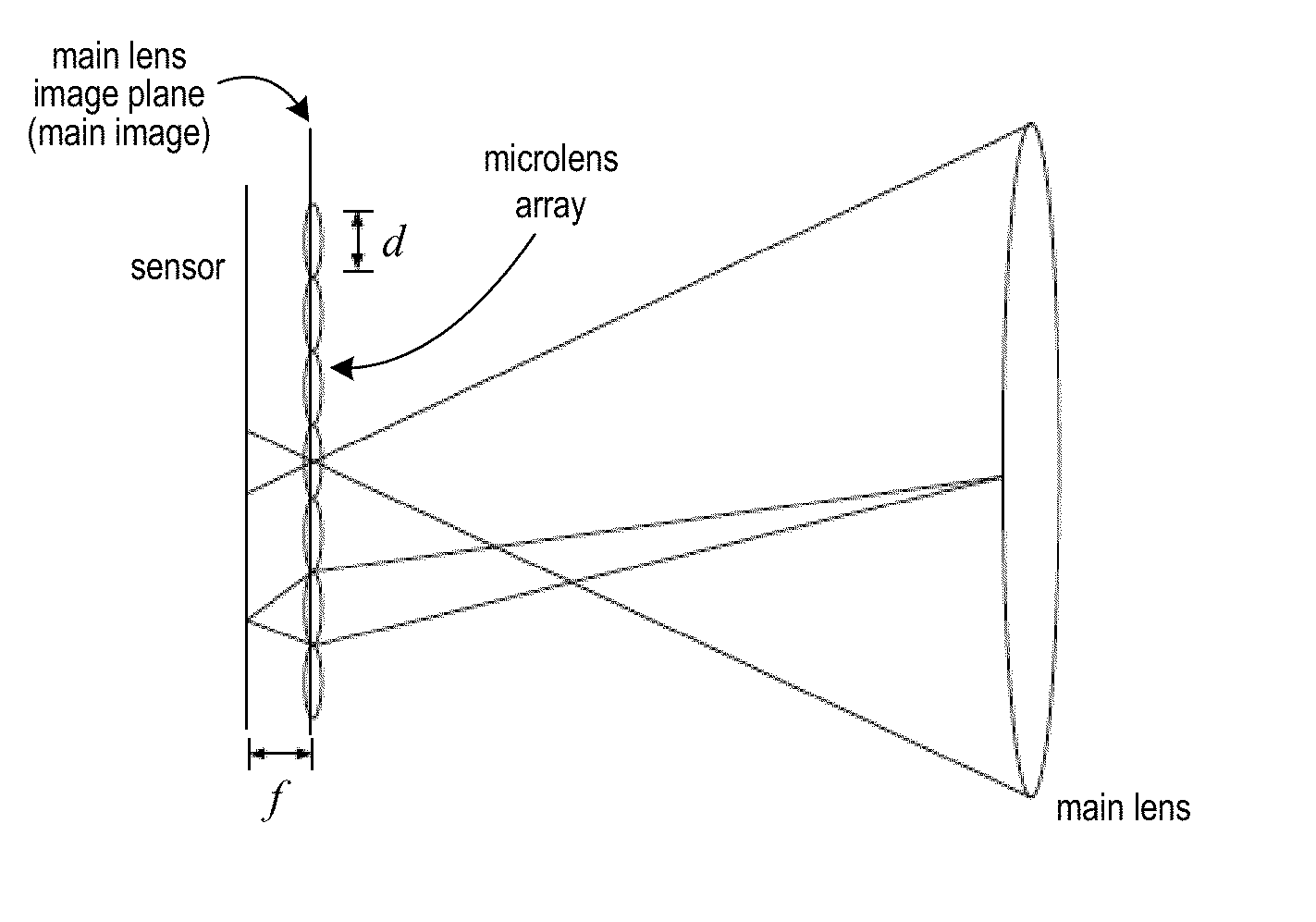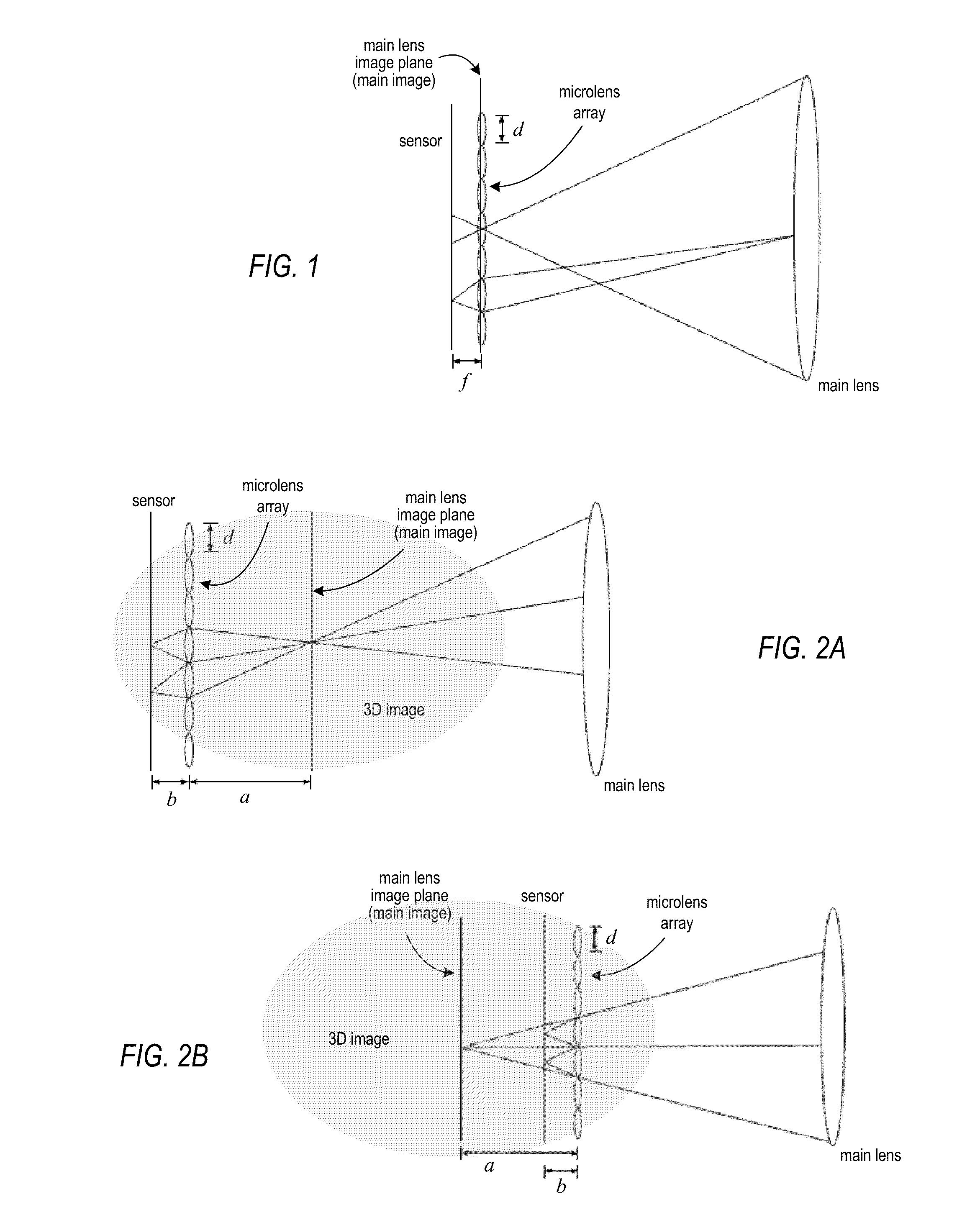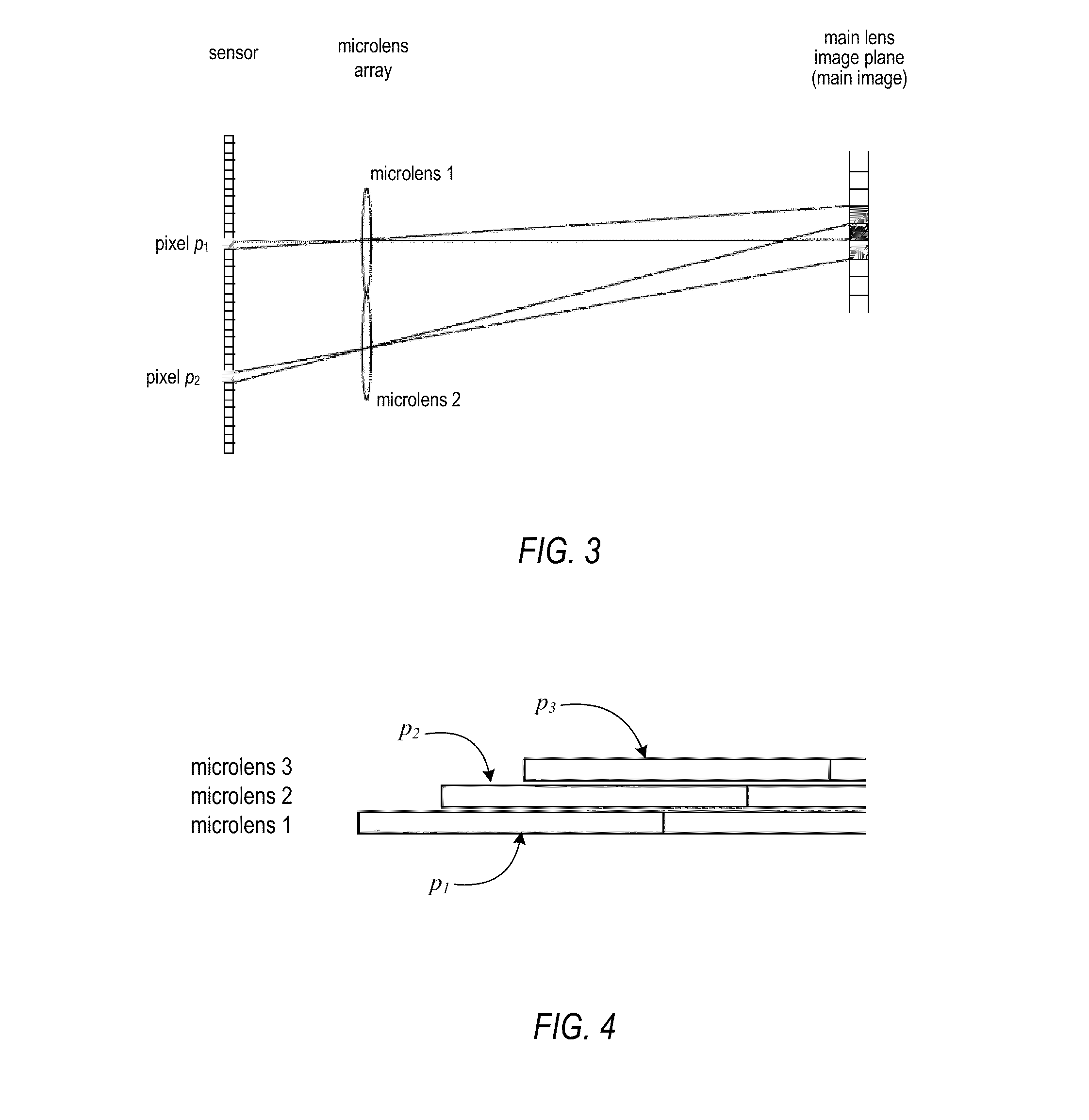Methods and Apparatus for Rendering Focused Plenoptic Camera Data using Super-Resolved Demosaicing
a technology of focused plenoptic camera and super-resolved demosaicing, which is applied in the direction of picture signal generators, solid-state device signal generators, television systems, etc., can solve the problems of damage to subpixel displacement information implicitly present in input images, and the modification of very sensitive subpixel positional data by conventional demosaicing
- Summary
- Abstract
- Description
- Claims
- Application Information
AI Technical Summary
Benefits of technology
Problems solved by technology
Method used
Image
Examples
example results
[0109]The example images presented in FIGS. 10 through 19 were generated using an example focused plenoptic camera implementation and selecting n=8 in Table 2 for 3×3 super-resolution, corresponding to a distance a=13.6 mm in front of the microlenses for this example camera. A relatively large value of n was used because, for lower values of n, the image may be too far from the microlenses and may be too small.
[0110]In the example focused plenoptic camera implementation used to capture these example images, the main camera lens is moved forward with a 13 mm extension tube and, the position of the main lens is fine-tuned by changing the focus. Refocusing provides fine-tuning by continuously moving the lens forward between 0 mm and 10 mm. Super-resolution was performed at a shift of A+n=82 pixels between captured microimages.
[0111]For the example focused plenoptic camera implementation, a medium format camera, using an 80-mm lens and a 39-megapixel digital back, is used. Pixel size is...
example implementations
of Rendering Methods
[0160]Embodiments of the super-resolved demosaicing technique may be performed by a rendering module implemented by program instructions stored in a computer-readable storage medium and executable by one or more processors (e.g., one or more CPUs or GPUs) of a computer system or other device. FIG. 44 illustrates a rendering module that may render images from flats captured by various embodiments of a focused plenoptic camera. Rendering module 920 may, for example, implement super-resolved demosaicing methods as illustrated in FIGS. 21 through 33. FIG. 45 illustrates an example computer system on which embodiments of rendering module 920 may be implemented. In some embodiments of a focused plenoptic camera, rendering module 920 may be implemented in the camera, e.g. in a captured data processing module. Referring to FIG. 44, rendering module 920 receives an input flat 910 captured by a focused plenoptic camera. An example portion of a flat as may be captured by va...
PUM
 Login to View More
Login to View More Abstract
Description
Claims
Application Information
 Login to View More
Login to View More - R&D
- Intellectual Property
- Life Sciences
- Materials
- Tech Scout
- Unparalleled Data Quality
- Higher Quality Content
- 60% Fewer Hallucinations
Browse by: Latest US Patents, China's latest patents, Technical Efficacy Thesaurus, Application Domain, Technology Topic, Popular Technical Reports.
© 2025 PatSnap. All rights reserved.Legal|Privacy policy|Modern Slavery Act Transparency Statement|Sitemap|About US| Contact US: help@patsnap.com



